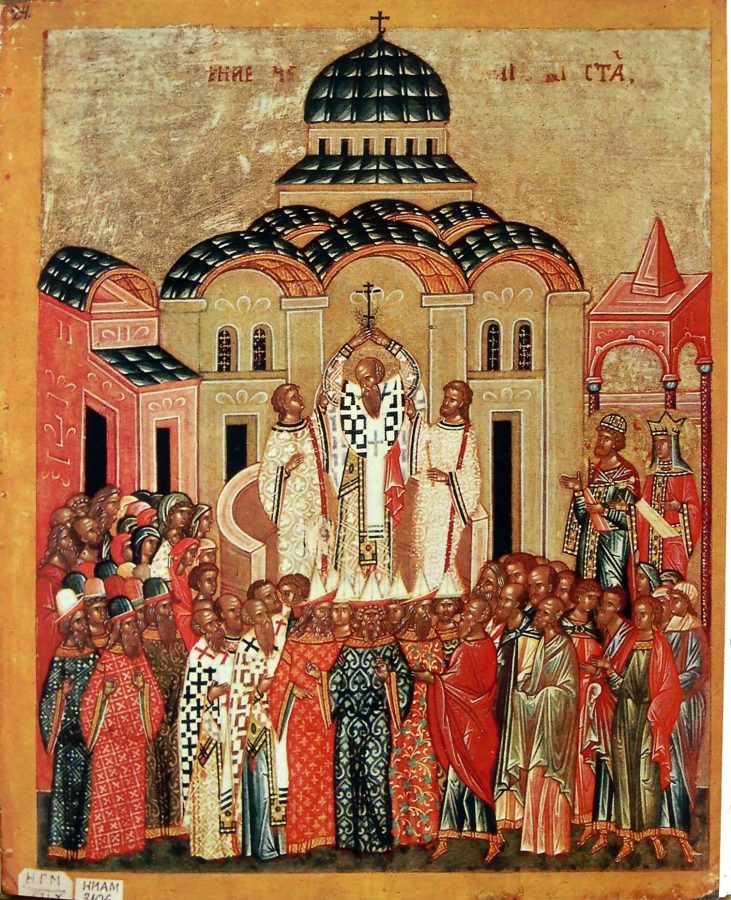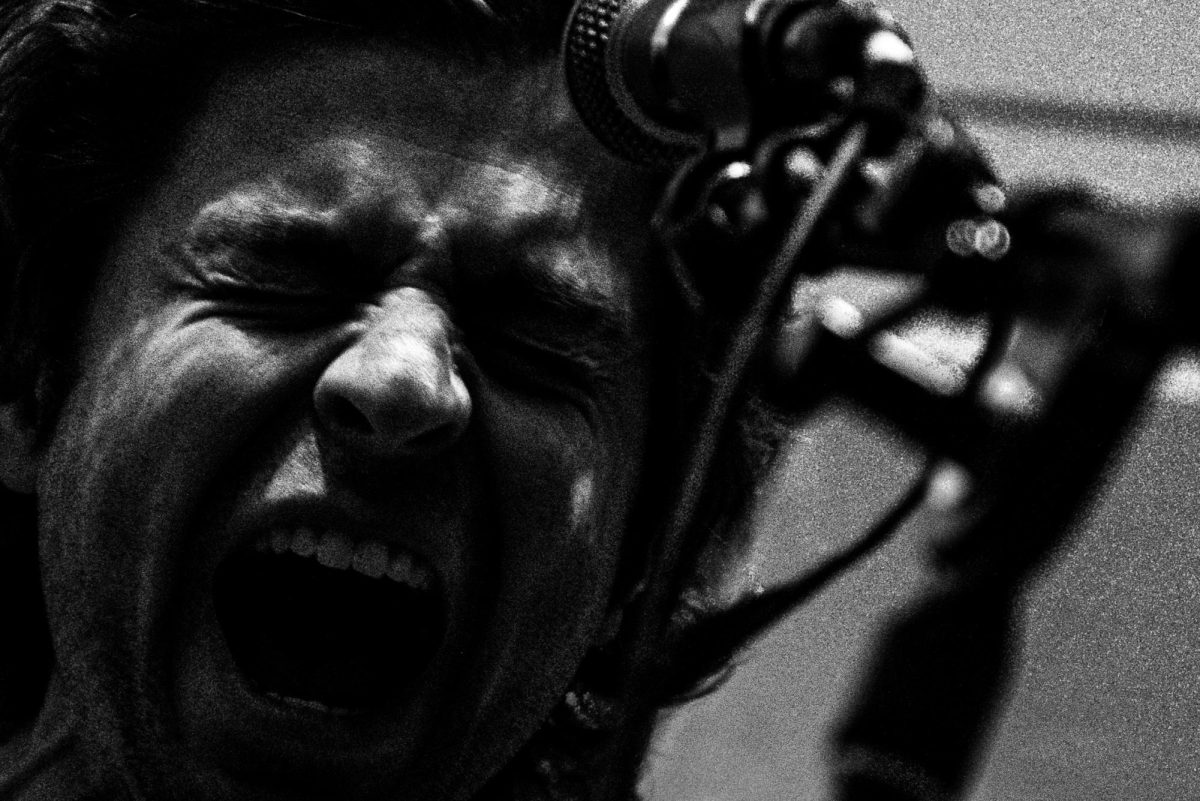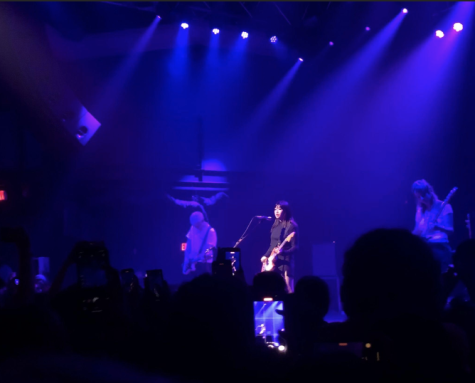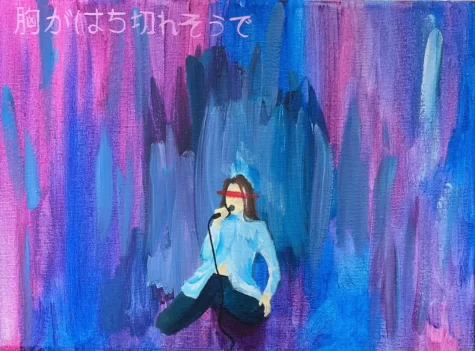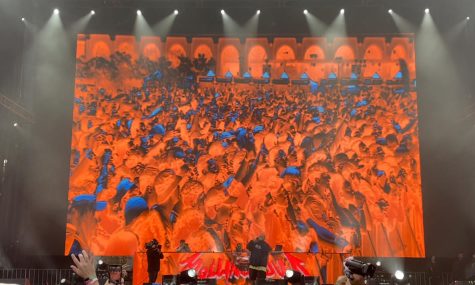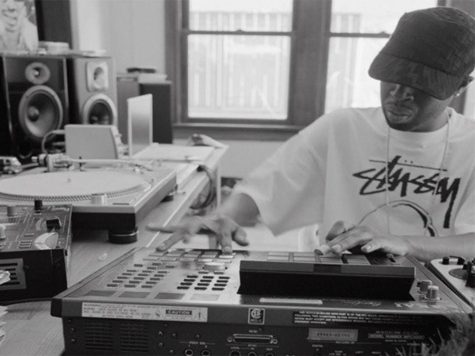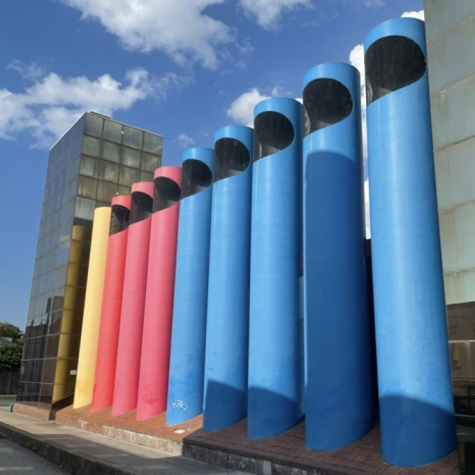Russian Orthodox Liturgical Chanting: the Next(?) Big Thing?
October 13, 2016
Courtesy of Ross Wolfe
My music tastes since childhood have changed and developed along a logical line. When I was five years old, my favorite band was the Ramones. When I was thirteen, it was probably… My Chemical Romance or Shinedown or something. Sixteen I had started listening to things pitchfork told me were cool (and often weren’t that cool), bands in the Chicago DIY scene, and music my cousin had made back in the day (look up Clipd Beaks). Through seventeen and eighteen I’ve been listening to still “pretty much anything,” but more jazz (records you could buy for a dollar,) different hip hop (check out Toki Wright,) and really anything that I consider interesting. I listen to a lot of music. But now, as I approach my nineteenth year, I find myself (in addition to everything else), a big fan of the liturgical a cappella chants of the Russian Orthodox, from the 1400s-1800s. If you told me that when I was thirteen, I would have probably given you a weird look and a weak laugh.
But let me tell you.
RUSSIAN ORTHODOX CHANTS ARE SO COOL. NEXT BIG THING IN MUSIC. (I mean, not, uh, next[?] big thing, but, you get it.) Below are some facts about the development of Orthodox Christendom in Russia, the music and how it developed, and several prominent artists to get you started.
In thinking about Russian language music (literature as well,) it is very important to understand that word order does not matter — the way the word(s) end is what creates the meaning of a sentence. This allows composers a lot more flexibility than those familiar with lyricism in English. When you listen to these hymns their original way, in Russian, it is striking how beautifully all of the words seamlessly flow and mingle with one another.
Russian Orthodox music was strictly a cappella. The voice was seen as the closest route to the lord, and because of this, the chants and music developed without instrumentation (instruments were not allowed in most Christian sects until the later part of the millennia). As described my Monitor Records, “the unmistakably Russian’ sound depends on a fusion of opposites in which the angelic quality of sopranos and lightness of tenors are pitted against the sonorous richness of contraltos and extraordinarily deep richness of the basses.” Christianity first came to Russia (at the time, Rus states or principalities) during the mid 800’s AD. Paganism remained dominant for some time, but in time Christianity overtook it and in Kiev they considered themselves a “New Jerusalem.” Building magnificent places of worship such as the Cathedral of Saint Sophia and donning these with incredibly striking and detailed icons, Christianity overtook the land we now know as Russia. The music developed as such: Voice being the closest way to the lord, hearing the choir and seeing the idols would enact a kind of connection to the lord within oneself. To start off with some music composed during the time of Kiev, listen to “Lord’s Prayer” as sung by the Kyiv Chamber Choir.

Cathedral of Saint Sophia, located in Kiev and constructed in the 11th century. The Cathedral is the most famous of many constructed in the time period. It’s elegance and size was unparalleled at the time.
As time went on, Kiev fell and Moscow became the clear regional power. By 1500, Moscow had built (with the help of the Italians) the famous Kremlin around the city center, and just as in Kiev, many fantastic churches with the iconic onion domes and tent roofs. The purpose was to keep off snow, but clearly they didn’t look very bad, either.

The reign of Patriarch Nikon during the 17th century as the ruler of the church marked a major turning point in Orthodox music. Nikon’s reforms introduced western notation in composition, and in conjunction with Peter the Great’s reforms and westernization as Tsar, (he didn’t care very much for religion) there was a risk of losing the choral tradition forever along with the declining importance of the church among elites. However, it was not lost, and in the 1700’s and 1800’s there was a wave of new composition and works — artists who had mastered western techniques in music had kept true to their motherland and made music that is more recognizable today as religious hymn, often reminiscent of modern classical music in style. Tchaikovsky’s work in liturgical chanting is known to have solidified Russian liturgical music as art at the same standard as any other music of the time. Arguably the most famous of the Russian composers in classical music, his liturgical work is not to be missed.

Patriarch Nikon in a heated meeting with other leaders of the Rus.
Sergei Rachmaninoff, another famous Russian composer known for his piano concertos was a fabulous liturgical composer. Find his work in the Liturgy of St. John Chrysostom, Op. 31 with Valery Polyansky as sung by the Russian State Symphony, below.
Another composer to start off your journey into Russian Orthodox choral music is Pavel Chesnokov, thought to be one of the best. Born near Moscow in 1877 and later studying at the Moscow Conservatory and being taught by the greats such as Tchaikovsky, he has composed over 400 sacred choral works and many more non-religious pieces.
While Orthodox music may not replace any sort of modern music, it definitely adds a new world of musical appreciation for me. It enacts a certain indescribable trance that brings me to a place of peace. Maybe it can do that for you, too.
About the feature image: An example of Russian Orthodox iconography, the Orthodox stressed the senses to create emanation of spirituality and divine connection from within. This included icon paintings in churches and a capella chanting alike. If you want to learn more about aesthetics in Russian Orthodox christendom, I’d suggest reading chapters one and two from James H. Billington’s “The Icon and the Axe.Û

